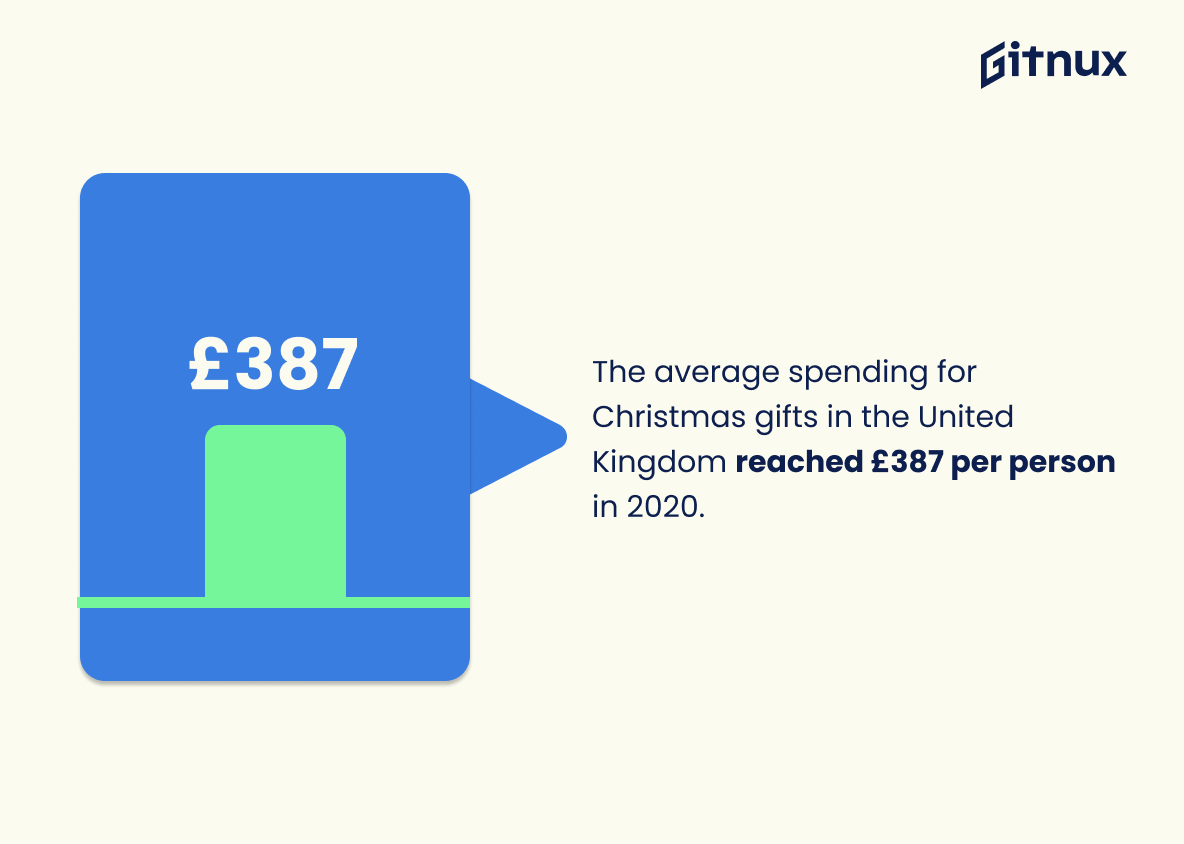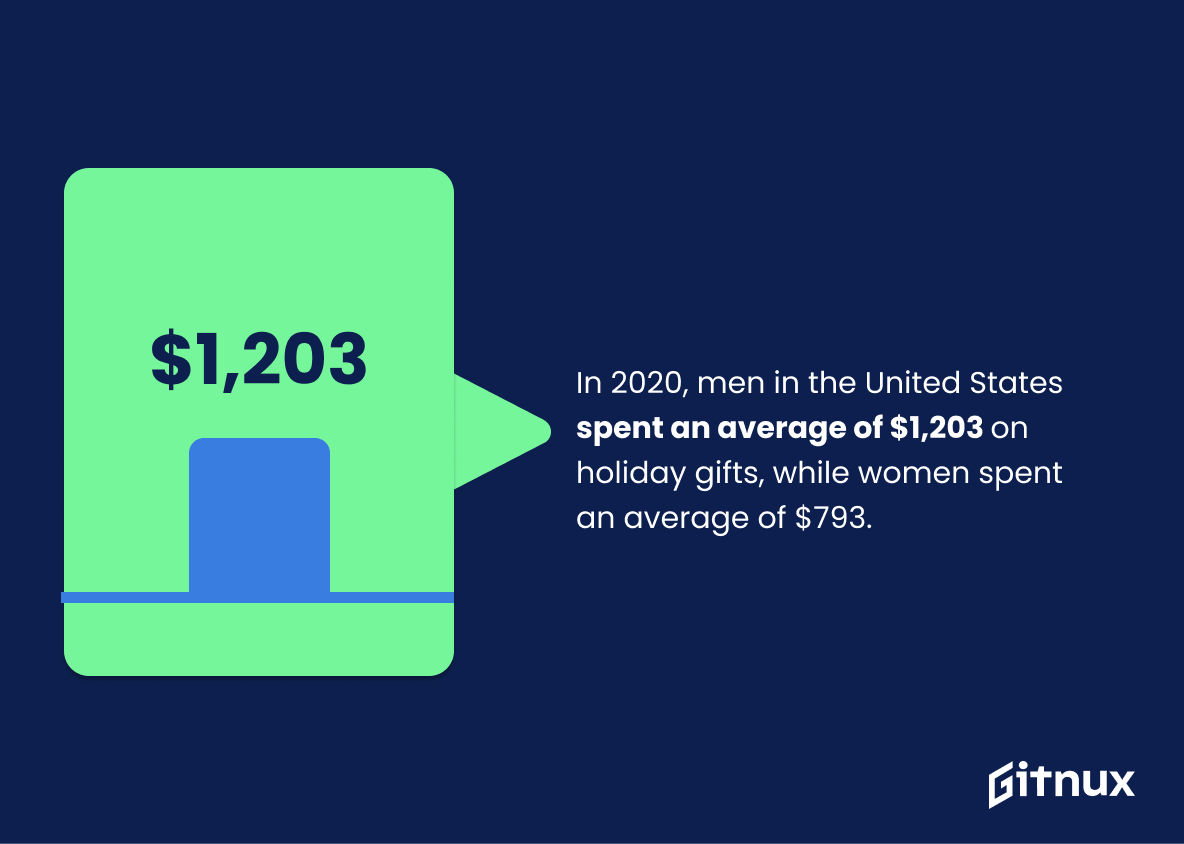As the holiday season approaches, it is important to understand how people are spending their money. This blog post will explore some of the latest statistics on holiday spending in 2020 and 2021 from around the world. We’ll look at retail sales figures for countries such as the United States, Canada, Australia, France and the UK; average planned expenditures by Americans; online shopping trends; gift card purchases; curbside pick-up usage rates; gender differences in spending habits; overspending with credit cards during holidays past and more. Read on to learn about these fascinating insights into consumer behavior this time of year.
This statistic is a testament to the immense spending power of the United States during the holiday season. It highlights the importance of the holiday season for retailers, as well as the importance of consumer spending for the overall economy. It also serves as a reminder of the importance of budgeting and planning ahead for holiday shopping.
The average American planned to spend $998 on holiday gifts, food, and decorations in 2020.
This statistic is a telling indication of the importance of the holiday season to the average American. It speaks to the level of commitment and investment that people are willing to make in order to make the season special for their loved ones. It also serves as a reminder of the economic impact of the holiday season, which can be felt in the form of increased spending and consumer activity.
Holiday Spending Statistics Overview
60% of shoppers are expected to splurge more than usual during the 2021 holiday season.
This statistic is indicative of the fact that the 2021 holiday season is likely to be a time of increased spending. With more shoppers expected to splurge more than usual, it is important to be aware of the potential financial implications of such a trend. This information can be used to inform budgeting decisions and help ensure that holiday spending does not become a burden.
In-store sales during the 2020 holiday season declined by 10.2%.
The 2020 holiday season saw a significant decrease in in-store sales, with a 10.2% drop compared to the previous year. This serves as a stark reminder of the impact the pandemic has had on the retail industry, and how consumer spending habits have been drastically altered. This statistic is an important indicator of the current state of the economy, and should be taken into consideration when discussing holiday spending statistics.
73% of holiday shoppers planned to primarily shop online during the 2020 holiday season.
This statistic is a telling indication of the shift in holiday shopping habits due to the pandemic. It highlights the importance of online shopping for holiday shoppers, and the need for businesses to adjust their strategies to accommodate this new trend. It is an important statistic to consider when discussing holiday spending trends, as it provides insight into how consumers are adapting to the current circumstances.
The average spending for Christmas gifts in the United Kingdom reached £387 per person in 2020.
This statistic is a telling indication of the impact the holiday season has on the UK economy. It highlights the importance of Christmas spending to the nation’s financial wellbeing, and serves as a reminder of the importance of budgeting and planning ahead for the festive period.
Canadian holiday spending in 2020 was forecasted to be $1,841 per person.
The statistic of Canadian holiday spending in 2020 being forecasted to be $1,841 per person is a telling indication of the financial impact of the holiday season. It speaks to the importance of budgeting and planning ahead for the holidays, as well as the potential for increased spending in the coming year. This statistic is a valuable insight into the current state of holiday spending in Canada, and can be used to inform decisions about how to best manage holiday spending in the future.
53% of Americans who overspent during the 2019 holidays used credit cards to make their purchases.
This statistic is a telling indication of the prevalence of credit card usage among Americans when it comes to holiday spending. It highlights the importance of being mindful of one’s spending habits during the holidays, as overspending can lead to a dangerous cycle of debt. This statistic is a reminder to be aware of the potential pitfalls of using credit cards to make holiday purchases.
56% of U.S. shoppers said they would not incur debt to cover their 2020 holiday expenses.
This statistic is a telling indication of the financial impact of the pandemic on U.S. shoppers. It shows that despite the holiday season, many are choosing to be fiscally responsible and not take on additional debt to cover their expenses. This is a positive sign that people are being mindful of their spending and taking steps to ensure their financial security.
Black Friday 2020 saw a 6.2% decrease in in-store traffic and a 21.6% increase in online purchases.
This statistic is indicative of a larger trend in holiday spending: the shift from in-store to online purchases. With Black Friday 2020 seeing a 6.2% decrease in in-store traffic and a 21.6% increase in online purchases, it is clear that more and more people are opting to shop online for their holiday gifts. This shift in consumer behavior has major implications for businesses, as they must now adjust their strategies to accommodate the growing demand for online shopping. This statistic is an important part of understanding the current state of holiday spending and how it is changing.
In 2020, men in the United States spent an average of $1,203 on holiday gifts, while women spent an average of $793.
This statistic serves as a stark reminder of the gender gap in holiday spending. It highlights the fact that men are spending significantly more money on holiday gifts than women, which could be indicative of a larger issue of gender inequality in the United States. This statistic is an important one to consider when discussing holiday spending and the implications it has on gender dynamics.
In 2019, 20% of American shoppers returned at least one gift they received during the holiday season.
This statistic is a telling indication of the impact of holiday spending on American shoppers. It suggests that a significant portion of shoppers are feeling the financial strain of the holiday season, and are having to return gifts they received in order to make ends meet. This is a sobering reminder of the importance of budgeting and planning ahead when it comes to holiday spending.
72% of American consumers planned to support small, local businesses during the 2020 holiday shopping season.
This statistic is significant in the context of Holiday Spending Statistics because it highlights the importance of small, local businesses during the holiday season. It shows that the majority of American consumers are committed to supporting these businesses, which is essential for their survival and success. This statistic is a reminder that small businesses are an integral part of our economy and should be supported during the holiday season.
In 2020, 83% of shoppers in France said they planned to spend less during the holiday season due to the COVID-19 pandemic.
This statistic is a telling indication of the impact the COVID-19 pandemic has had on holiday spending in France. It demonstrates that the majority of shoppers are feeling the financial strain of the pandemic and are taking steps to reduce their spending during the holiday season. This statistic is an important reminder of the economic realities of the pandemic and how it has affected people’s spending habits.
Only 19% of UK consumers planned to spend more on holiday shopping because of anticipated discounts due to the pandemic in 2020.
This statistic is a telling indication of how the pandemic has impacted consumer spending habits. It shows that despite the expectation of discounts due to the pandemic, the majority of UK consumers are still not planning to increase their holiday shopping budget. This statistic is important to consider when discussing holiday spending trends, as it provides insight into how the pandemic has affected consumer behavior.
The majority of holiday shoppers (61%) planned to purchase gift cards in 2020.
This statistic is a telling indication of the importance of gift cards in holiday shopping. It shows that gift cards are a popular choice for shoppers, and that they are likely to be a major part of holiday spending this year. This information is important for anyone writing a blog post about holiday spending statistics, as it provides insight into the preferences of holiday shoppers.
Conclusion
The 2020 holiday season was a unique one, with the COVID-19 pandemic causing many shoppers to adjust their spending habits. Despite this, retail sales in the United States still amounted to around 789.4 billion U.S. dollars and online shopping reached $188.2 billion in revenue during that time period alone – showing just how resilient consumers can be when it comes to celebrating holidays despite difficult circumstances or economic downturns.
In addition, gift cards were popular among holiday shoppers (61%), as well as curbside pick-up for delivery methods (47%). The average American planned on spending $998 on gifts and decorations while Canadians spent an estimated $1,841 per person; however UK citizens had lower expectations of £387 per person due to anticipated discounts from the pandemic’s effects on businesses worldwide..
Overall, these statistics demonstrate that even though there may have been some changes in consumer behavior due to current events such as lockdowns or financial insecurity caused by job losses – people are still willing and able to celebrate special occasions like Christmas through traditional means such as buying presents for loved ones or decorating homes with festive items regardless of what is going on outside their doors at any given moment in time.
References
0. – https://www.businesswire.com
1. – https://www.newswire.ca
2. – https://www.experian.com
3. – https://www.moneyunder30.com
4. – https://www.nrf.com
5. – https://www.cnbc.com
6. – https://www.npd.com
7. – https://www.fedex.com
8. – https://www.statista.com
9. – https://www.fool.com
10. – https://www..deloitte.com














